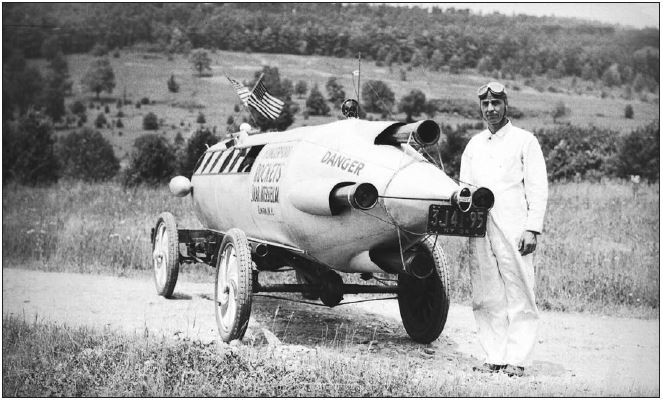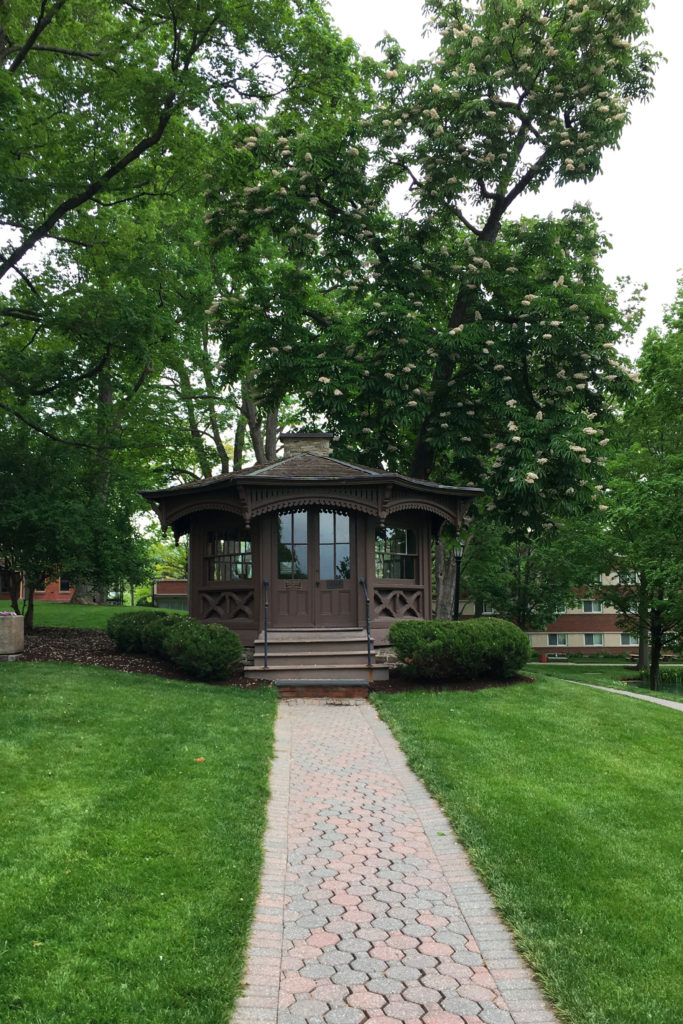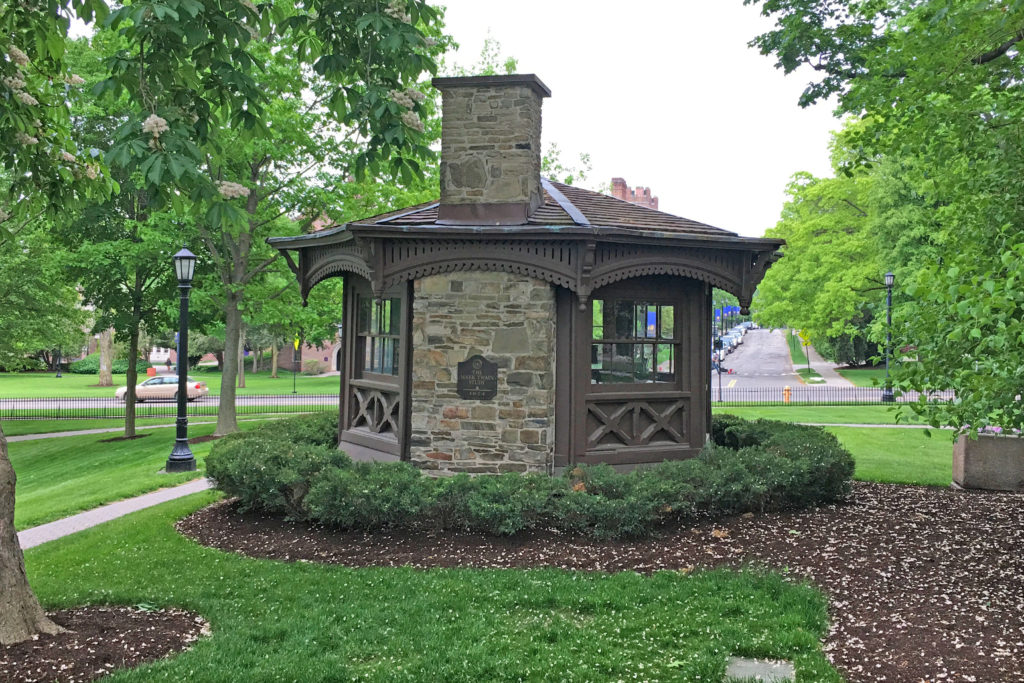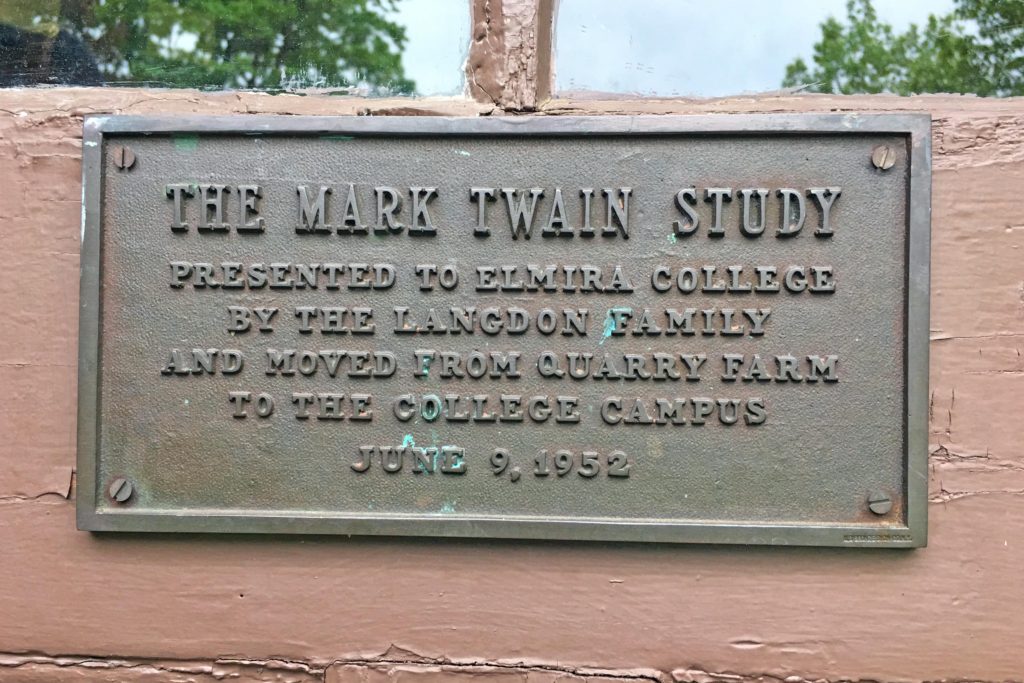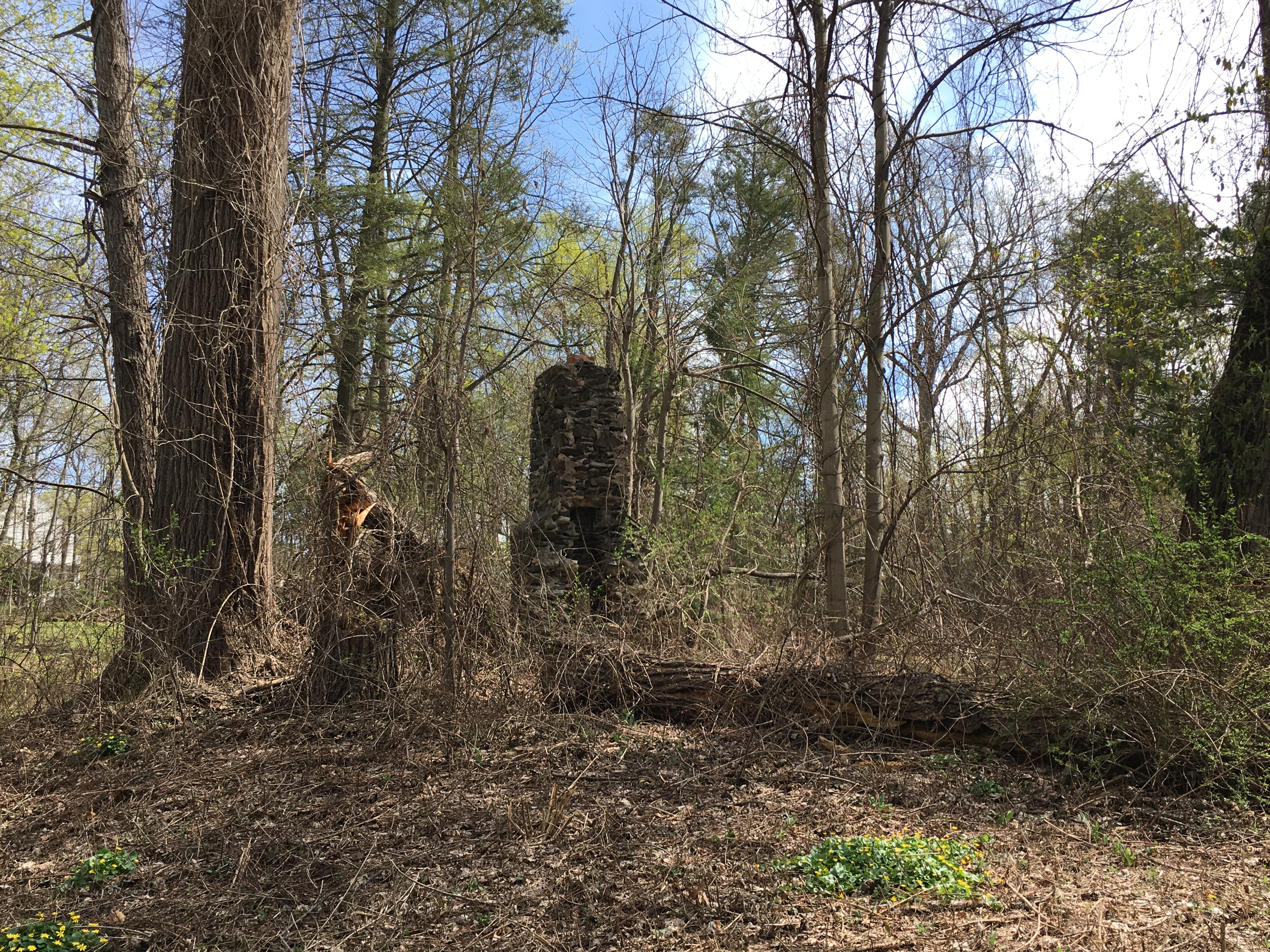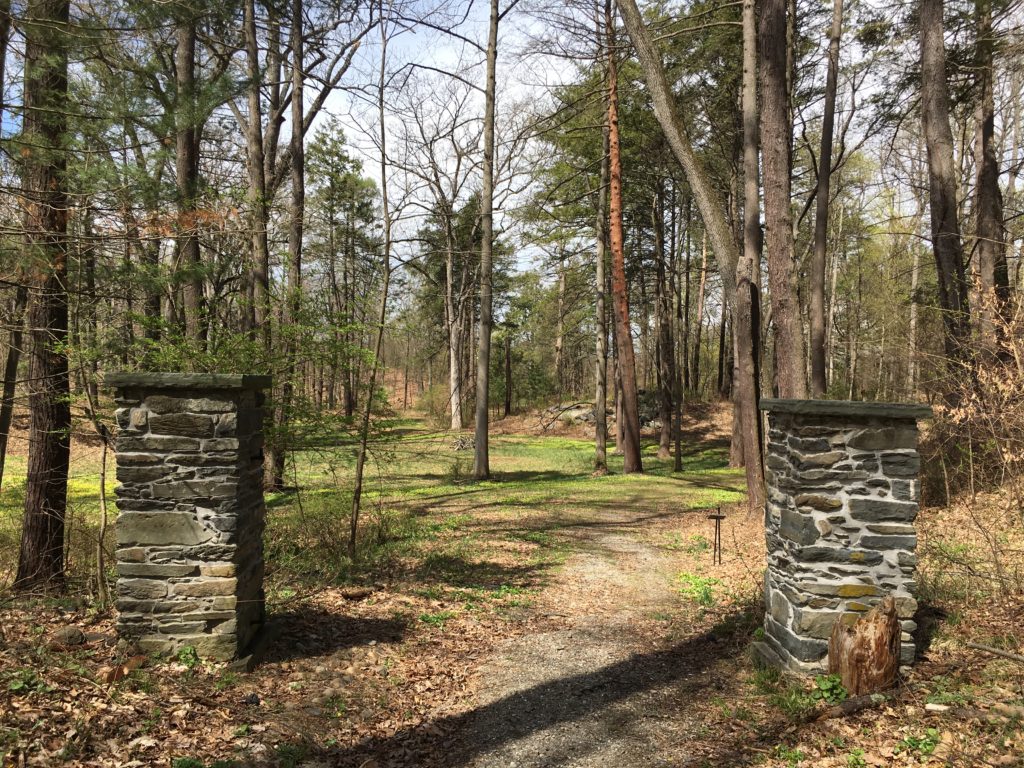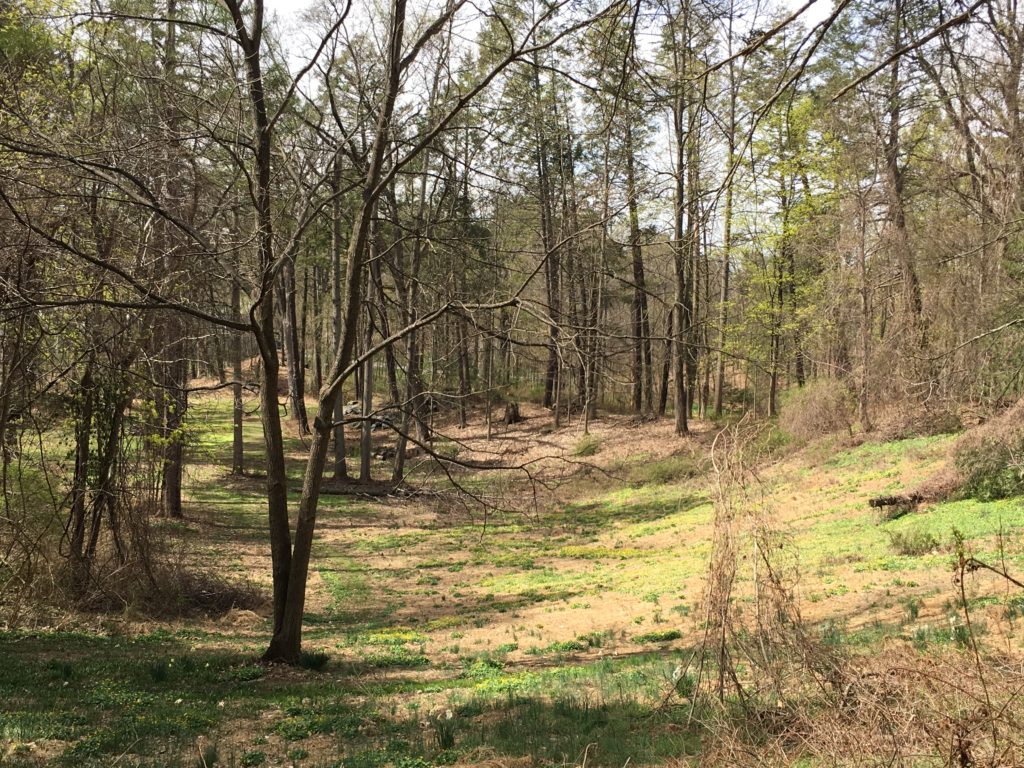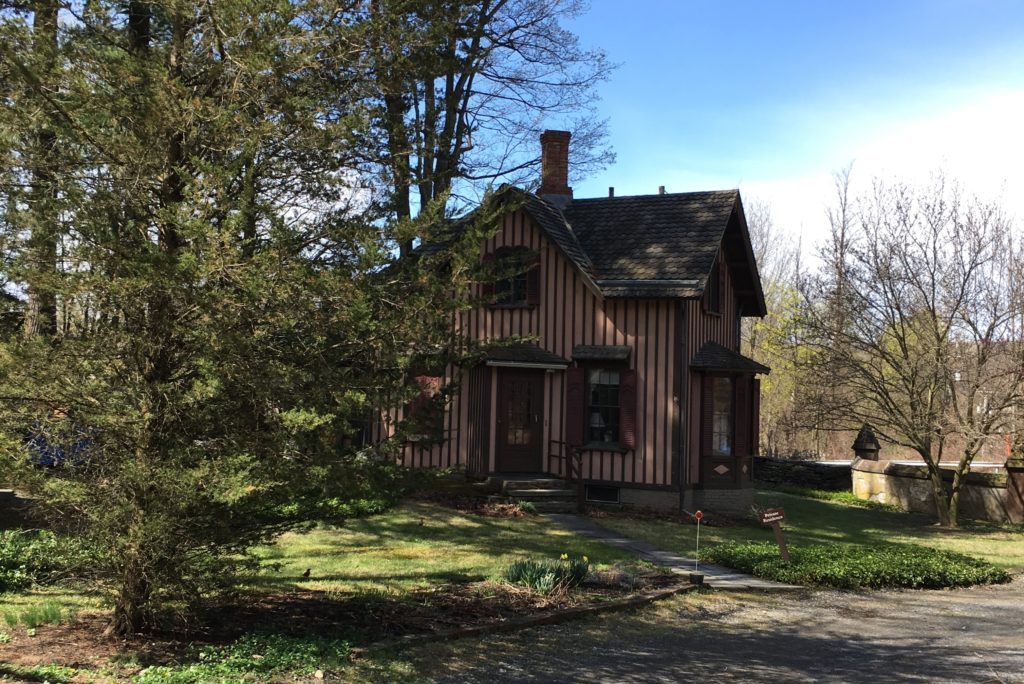French Huguenots founded the town of New Paltz in New York state in 1677. Their first houses were made of logs, but by the beginning of the 1700s, they were building more permanent stone houses. Several of those buildings survive today on Huguenot Street, a National Historic Landmark.
Tag: New York
Scholarship for New York Archaeology Undergraduates
For New York state undergraduates interested in a career in archaeology, the Daniel H. Weiskotten Scholarship Fund 2018 awards $750 and a 1 year membership in the New York State Archaeological Association
To apply for this award, a student must be a New York state resident enrolled in an accredited New York state college or university undergraduate anthropology or history program. The student applicant must have completed a minimum of 30 credit hours; be majoring in anthropology or history; and be intending to pursue a career in archaeology (prehistoric, historic, military, industrial, underwater archaeology or museology); and have a financial need.
Details are at New York State Archaeology
The Scholarship is administered by the William M. Beauchamp Chapter of the New York State Archaeological Association
Iron in New York – New Open Access Book from the NYSM
The New York State Museum has just released Iron in New York, edited by Martin Pickands, a collection of eight articles on the history, geology, and archaeology of the iron industry in New York, primarily in the Adirondacks and the Hudson Valley. The book is free to download at the NYSM.
Paleo-Indian Science Cafe in Albany, New York
From the NYSM:
Coming in to the Country: The First New Yorkers and the Ice Age Landscapes of New York
Tuesday, January 23, 2018, 6:00-7:00 PM
@ The Hollow Bar + Kitchen
Archaeology on the Pastoral Islands of Lake Champlain
Suzanne Carmick writes in the New York Times Travel Section about visiting the Pastoral Islands of Lake Champlain. The Vermont islands of South Hero, North Hero, and Isle La Motte, are on the border of New York and just south of Canada.
Carmick mentions the long history of Isle La Motte, which was occupied by Native Americans long before Samuel Champlain first recorded it in 1609. In A.D. 1666, the French built Fort St. Anne on Isle La Motte. The fort was occupied for as little as two years before being abandoned. In the late 1800s, the Catholic Church purchased the land, which became St. Anne’s Shrine. A Vermont priest, Father Joseph Kerlidou excavated the remains of the French fort.
In 1917, archaeologist Warren Moorehead conducted excavations near the shrine, finding Woodland period ceramics. At another location, Reynolds Point, he found artifacts from the earlier Archaic period. In the early 1960s, a cremation burial site attributed to the Archaic Glacial Kame culture was accidentally uncovered by workers on the island. New York State Archaeologist William Ritchie examined the artifacts found with the ochre-stained human bones. The grave goods included Native copper adzes, copper beads, shell gorgets and beads, and over 100 pieces of galena.
For more on Fort St. Anne, see Enshrining the Past: The Early Archaeology of Fort St. Anne, Isle La Motte, Vermont
The Rocket Car “Moon Girl” of 1929: A History
The New York State Library’s Instagram feed just reminded of this book from 2013 (freely available from the New York State Museum): Daniel and Floyd Hungerford: Rocket Power, Interstellar Travel, and Eternal Life, by Geoffrey N. Stein.
Yes, it’s a rocket car. Yes, you could legally drive it on New York roads. Yes, the name of the rocket car is Shirley Lois “The Moon Girl.” Yes, Buck Rogers himself told Daniel and Floyd that they “were doing humanity a real service.”
OK, so pictures of the Hungerford Rocket are all over the internet –like on the Hemmings blog, and there’s more on io9-but Geoffrey Stein has produced what will likely be the definitive (and probably the only) history of it and its creators.
The Hungerfords were automobile mechanics and airplane builders and repairers in Elmira, New York, in the early days of aviation. Floyd had “the personality of a dumpling” and Dan claimed to have psychic powers. They built the Moon Girl in 1929, using an eight year old Chevy chassis, wood, cardboard (for easy egress in case of emergency), and an iron rocket.
After building and driving their rocket car, they set their sights higher: “we considered trying to build a rocket ship which might reach the Moon, but we never got any further on this than having a picture painted by a sign painter we knew.” (p. 21)
Download the pdf at the New York State Museum
Edited from and originally posted on Adequacy.
Mark Twain’s Tiny House
The place where Samuel Clemens, a.k.a. Mark Twain, did much of his writing is an octagonal stand-alone study that his sister-in-law built for him in Elmira, New York. Many of his most famous works, including The Adventures of Huckleberry Finn, were written here. The study was later moved to the campus of Elmira College, where it can be seen today.
The Landscape A.J. Downing Designed at Springside, New York
Springside is a nineteenth-century park and estate built by Matthew Vassar in Poughkeepsie, New York that is now maintained by a non-profit organization and is open to the public.
Vassar, who made his fortune in brewing beer before founding the women’s college that bears his name, bought 43 acres of land on the south side of Poughkeepsie in 1850 and hired famed landscape gardener Andrew Jackson Downing and his architect partner, Calvert Vaux, to design a summer estate for him.
Although Downing died in 1852 in a fire on a Hudson River steamship, Vaux and Vassar continued to work on Springside. Vassar moved into the cottage built on the site; a larger villa was planned, but never constructed, as Vassar preferred the smaller cottage. Vassar lived at Springside fulltime beginning in 1867.
After his death, the property passed on to a series of owners, and was subdivided and merged with other properties, but most of the buildings and the constructed landscape survived mostly intact. In the twentieth century, Springside faced a series of threats from development. In 1969, Springside was listed as a National Historic Landmark, but within weeks, the barn and carriage house were burned down by arsonists. In 1970, the property was sold to a developer. In 1976, the cottage was in danger of destruction. The façade of the cottage was removed to the New York State Museum, and the rest of the cottage was destroyed. In the 1980s, under threat of a lawsuit from preservationists, an agreement was reached to preserve about half of the estate and allow the construction of condominiums on the other half.
Springside is now maintained by a nonprofit organization, Springside Landscape Restoration. Now, most of the pathways have been cleared and they curve among the rocky knolls. The original Beautiful and Picturesque landscape now tends more towards the picturesque, with tangled, unkempt plants held partially in check along the pathways.
“Dish Camp” for Historic Ceramics Aficionados-Scholarship Available

Note that the deadline for applying is coming soon!
Historic Eastfield Foundation is pleased to announce that it will offer two scholarships for emerging ceramics scholars to attend the Historic Ceramics Symposium, better known as “Dish Camp”, June 23-24, 2017 at Historic Eastfield Village in East Nassau, New York. Scholarship recipients will receive a tuition waiver for the two day program, lunch both days, and a period dinner on Saturday night. Recipients will be responsible for their own transportation and lodging. Primitive lodging at Brigg’s Tavern is available on site for no cost.
Those interested in applying should provide a one page written essay that discusses their personal interest in historic ceramics and why they believe that attending Dish Camp would benefit their education. Please send your essay and contact information via email to Debbie Miller, Program Chair, at deblmiller@hotmail.com<mailto:deblmiller@hotmail.com>.
History Program at the New York State Museum
Upcoming Great Places and Spaces history event in Albany this Saturday. From the press release:
Representatives from state historic sites and cultural institutions will provide educational hands-on activities, unique artifacts to explore, and information about upcoming events during the annual “New York State’s Great Places and Spaces” program on Saturday, January 14 from noon to 4:00 p.m. at the New York State Museum.
Visitors can learn about New York State history through activities and information provided by over 20 state historic sites, museums, and libraries. In addition, The Iron Jacks, a singing group that specializes in songs about U.S. sailors of the Civil War era, will perform at noon and 2:00 p.m. There will also be a guided tour of the Hudson Valley Ruins exhibition at 1:00 p.m. and 3:00 p.m. and a “hands-on” cart of Native Peoples reproduction objects where visitors can get first-hand experience with materials used by the Iroquois in the past and present.
Participating institutions include the Adirondack Museum, Albany Institute of History & Art, Albany Pine Bush, Burden Iron Works, Civil War Round Table, Crailo State Historic Site, Franklin D. Roosevelt Presidential Library & Museum, Historic Cherry Hill, Guilderland Historical Society, Johnson Hall State Historic Site, Knox’s Headquarters State Historic Sites, New Windsor Cantonment, NYS Office of Parks, Recreation & Historic Preservation, Olana State Historic Site, Saratoga National Historical Park, Saratoga Racing & Hall of Fame, Schenectady Historical Society, Schoharie Crossing State Historic Site, U.S. Grant Cottage Historic Site, and U.S. Naval Landing Party.
Admission is free. Further information about programs and events can be obtained by calling (518) 474-5877 or visiting the Museum website at www.nysm.nysed.gov.

